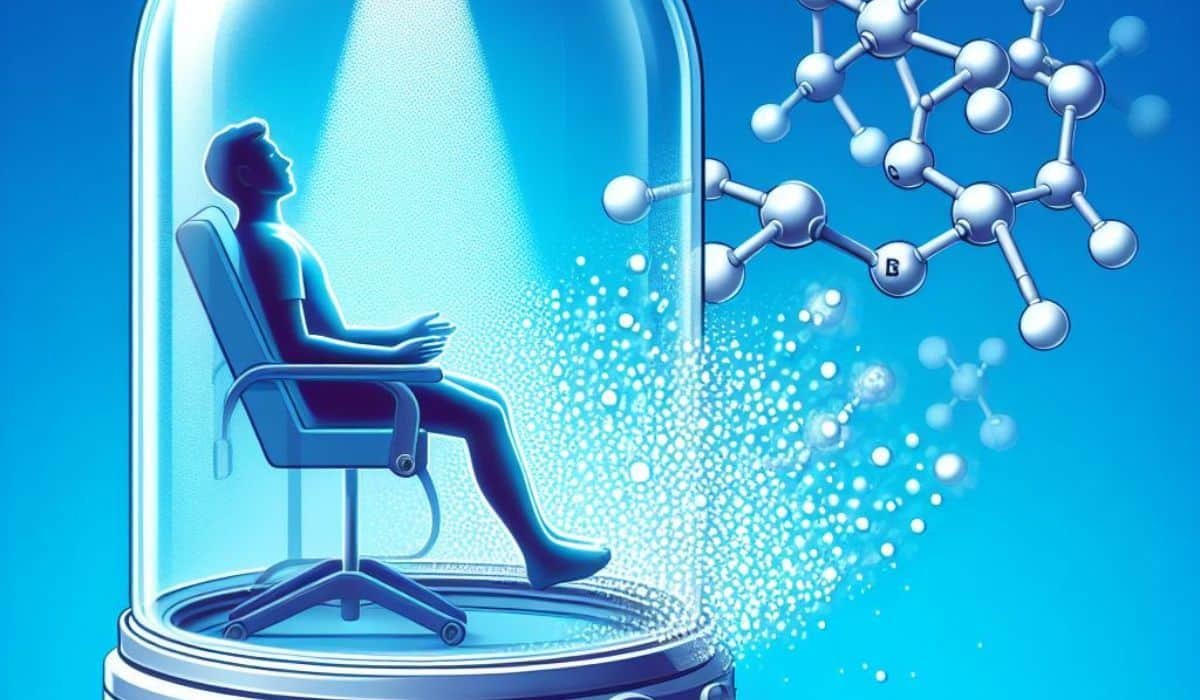Can Hyperbaric Oxygen Therapy Treat Carbon Monoxide Poisoning? Here’s What Science Says

Every year, thousands of people are silently struck by a hidden danger in their own homes: carbon monoxide poisoning. This tasteless, colorless, and odorless gas can creep unnoticed, leaving many people unsure of what’s happening until symptoms become severe.
If you or someone you care about has been exposed to carbon monoxide, you’re likely looking for the best way to treat it quickly and effectively. That’s where hyperbaric oxygen therapy, or HBOT, comes in.
HBOT works by giving patients pure oxygen in a special room or chamber that’s under higher pressure than normal. This can be a real life-saver for those poisoned by carbon monoxide, as it helps to replace the toxic gas in their blood with oxygen, which their bodies desperately need.
By the end of this article, you’ll get a clear understanding of how HBOT works, what the research says, and how it might help with carbon monoxide poisoning.
Hyperbaric oxygen therapy and Carbon monoxide poisoning: What Science Says
My conclusion is Yes – Hyperbaric Oxygen Therapy can be used to treat carbon monoxide poisoning – according to the scientific resources I am about to present further below.
Here’s a summary table of my findings on hyperbaric oxygen therapy (HBOT) for carbon monoxide poisoning:
| Year | Journal | Study Type | Key Findings |
|---|---|---|---|
| 2002 | NEJM | Clinical Trial | 3 HBO treatments within 24 hours reduced cognitive problems at 6 weeks and 12 months compared to normobaric oxygen. |
| 2005 | JUHM | Review | HBO2 remains effective for CO poisoning, with an average annual treatment of 1,500 patients in the US from 1992-2002. |
| 1985 | Annals of Emergency Medicine | Study | Effective HBO treatment for 115 cases, with 9.6% mortality and 1.9% major sequelae, emphasizing rapid CO elimination. |
| 2013 | British Journal of Nursing | Article | HBO underutilized despite effectiveness; 82 patients treated, 57% self-poisoning, with 13 requiring intensive care. |
| 2009 | Der Anaesthesist | Case Study | Successful HBO treatment for severe CO poisoning (82% CO-Hb), preventing delayed neurological issues. |
| 2017 | Chest Journal | Review Study | Lower mortality with HBOT in Taiwan, especially in patients under 20 and those with acute respiratory failure. |
| 2021 | Critical Care Medicine | Study | HBO2 within 6 hours improved neurocognitive outcomes at 6 months, emphasizing early administration. |
| 2011 | Cochrane Database of Systematic Reviews | Review | Uncertainty about HBO’s effectiveness due to methodological flaws and biases in analyzed trials. Calls for more well-designed trials. |
Note: The last entry from the Cochrane Database of Systematic Reviews provides a contrasting perspective, showing uncertainty about HBO’s effectiveness based on methodological issues in the analyzed trials.
Here’s what the science has to say.
- A 2002 study published in the New England Journal of Medicine found that giving patients with carbon monoxide poisoning three hyperbaric oxygen treatments within 24 hours significantly decreased the risk of cognitive problems at six weeks and twelve months compared to those who received normobaric oxygen treatment. This suggests that this HBOT may help prevent long-term cognitive issues in people with acute carbon monoxide poisoning.
☝️ Normobaric oxygen treatment is a medical therapy that involves administering oxygen at normal atmospheric pressure. It is used to increase the oxygen levels in the body and improve tissue oxygenation
- A 2005 review in the Journal of Undersea and Hyperbaric Medical Society reveals that hyperbaric oxygen (HBO2) remains effective for carbon monoxide (CO) poisoning. The study shows a consistent annual treatment of around 1,500 CO-poisoned patients in the US from 1992-2002. While the total number of patients treated annually didn’t drop, the average treatments per patient declined.
- Looking back to 1985, an article in the Journal Annals of Emergency Medicine discussed the treatment of 115 cases of acute carbon monoxide poisoning from 1978 to 1984. Hyperbaric oxygen therapy proved effective, with a 9.6% mortality rate and only 1.9% of survivors experiencing major issues. The study highlighted the therapy’s ability to rapidly eliminate carbon monoxide, reducing the risk of death and complications.
- A 2013 article in the British Journal of Nursing discussed the use of hyperbaric oxygen therapy (HBO) for carbon monoxide (CO) poisoning, the leading cause of fatal poisoning in the UK, and concluded that HBO is underutilized despite its effectiveness. Over five years, 82 patients, 57% from self-poisoning, were treated, with 13 requiring intensive care.
- In a 2009 case study published in the German medical journal “Der Anaesthesist,” a patient with severe carbon monoxide poisoning (CO-Hb concentration 82%) was successfully treated with hyperbaric oxygen therapy (HBO) after rescue. However, during decompression, the patient experienced a cardiac arrest due to various complications. After resuscitation, continued HBO therapy prevented delayed neurological issues. Three months post-treatment, the patient showed no neurological sequelae, suggesting the success of HBO therapy in preventing long-term effects.
- A 2017 review study in the Chest Journal examined the impact of hyperbaric oxygen therapy (HBOT) on carbon monoxide poisoning (COP) mortality. Analyzing data from 25,737 patients in Taiwan, those who received HBOT showed a lower mortality rate than those who did not, particularly in patients under 20 and those with acute respiratory failure. Continuous HBOT sessions and factors like age and comorbidities influenced outcomes, suggesting HBOT’s potential benefit in treating COP and guiding treatment decisions.
- Moving closer to today, a 2021 study in Critical Care Medicine investigated hyperbaric oxygen therapy (HBO2) timing in carbon monoxide poisoning. Analyzing 706 patients, those receiving HBO2 within 6 hours showed better neurocognitive outcomes at 6 months than those treated within 6-24 hours. Longer treatment intervals correlated with increased poor outcomes.
- On the other hand, a 2011 review published in the Cochrane Database of Systematic Reviews analyzed randomized trials on hyperbaric oxygen (HBO) versus normobaric oxygen (NBO) for carbon monoxide poisoning. Of the six trials involving 1361 participants, two suggested HBO benefits, but methodological flaws and biases existed in all trials. Meta-analysis showed no significant HBO advantage, indicating uncertainty about HBO’s effectiveness in preventing neurologic sequelae.
This is the only study I could find that doesn’t say something positive about the role of HBOT and Carbon Monoxide Poisoning.
Understanding Carbon Monoxide Poisoning
Carbon monoxide poisoning, often dubbed the ‘silent killer,’ occurs when the gas accumulates in the bloodstream, disrupting the delivery of oxygen to cells and tissues throughout the body.
This insidious gas is produced by the incomplete combustion of carbon-containing materials. It can emanate from various sources, such as car engines, non-electric space heaters, furnaces, and smoke from fires.
Carbon monoxide’s danger lies in its ability to bind with hemoglobin in the blood with a higher affinity than oxygen. This binding impairs the blood’s capacity to offload oxygen to where it is needed, leading to cellular suffocation. [1]
Symptoms of carbon monoxide poisoning include headache, dizziness, nausea, vomiting, fatigue, and impaired cognitive function. [1]
Quick identification and treatment are critical. A diagnosis is confirmed through CO-oximetry, which measures the level of carbon monoxide in the blood. [1]
Normal levels range from 0-5%, but exposure resulting in levels above 15% is considered dangerous and warrants immediate medical intervention.
Hyperbaric Oxygen Therapy Explained
Hyperbaric oxygen therapy, a life-saving intervention for severe carbon monoxide poisoning, accelerates the elimination of the toxic gas from the bloodstream and restores vital oxygen levels to tissues.
This advanced treatment significantly reduces the half-life of carboxyhemoglobin—the complex formed when carbon monoxide binds to the hemoglobin in red blood cells—rapidly releasing the bound carbon monoxide and allowing oxygen to reoccupy its place.
Administered in a controlled environment, patients enter a pressurized chamber where they breathe pure oxygen.
This increased pressure, typically two to three times that of the normal atmosphere, dissolves more oxygen in the blood plasma and can more effectively saturate tissues, even when hemoglobin is compromised by carbon monoxide.
As we’ve seen earlier using hyperbaric oxygen therapy within six hours of exposure is critical to minimize the potential for long-term cognitive and neurological damage.
Frequently Asked Questions
Bottom Line
In summary, hyperbaric oxygen therapy is as an effective treatment for carbon monoxide poisoning, by rapidly displacing carbon monoxide from hemoglobin and enhancing tissue oxygenation.
The therapy’s role in minimizing potential long-term neurological damage underscores its significance.
More HBOT Articles

